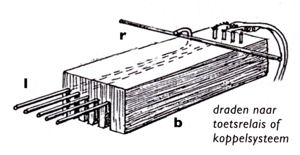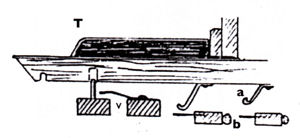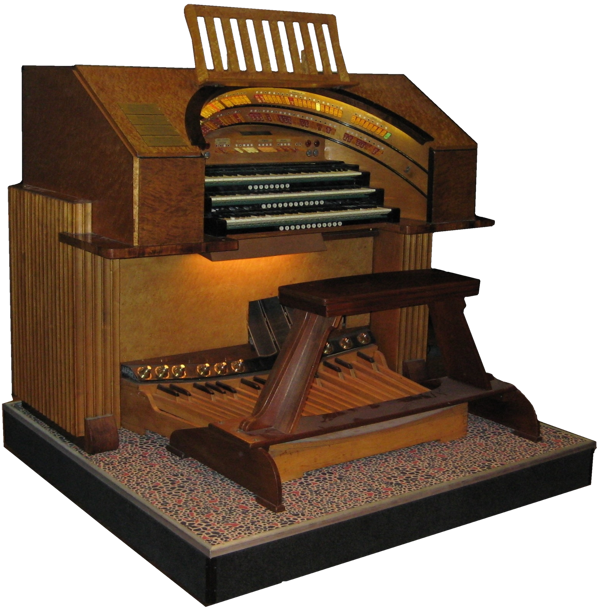Technique behind the Theatre Organ part 5
It is a long way from key to pipe!
In order to make music on an organ the keys must be played … but what happens when a key is pressed?
The key (t) is actually a switch: when pressed it passes on the positive supply voltage. This is usually 16 to 18 volts which has been generated by a dynamo connected to the wind motor, or by a rectifier. There are organs that work with multiple supply voltages for example 16/18 volts for the pipe magnets and 24 volts for the relay.


The switching path is long:
first a sound/register is chosen and thus the musical instrument which is to be heard. The choice can be made manually (h) or by using presets (p) i.e. the memory system.
Then one or more keys are pressed and the organ will play!
The key movement is illustrated above: when pressed plate (a) moves to a block (b) with pins.
The first pin (l) is connected to the positive terminal. As soon as the key is pressed the low-voltage current will be passed on to the other pins.
The shared rail (r) makes it possible for all pins to effectively be connected to the positive terminal.


Many organs are equipped with a ‘second touch’ (see illustration below). In this construction a second contact strip has been fitted which will only touch the second block when the key is pressed down further. There are two contact blocks (b) and two contact plates (a) present. These provide the organist with the opportunity to create special musical effects, often a countermelody or effect using only one hand! Handy if you know how to play…


